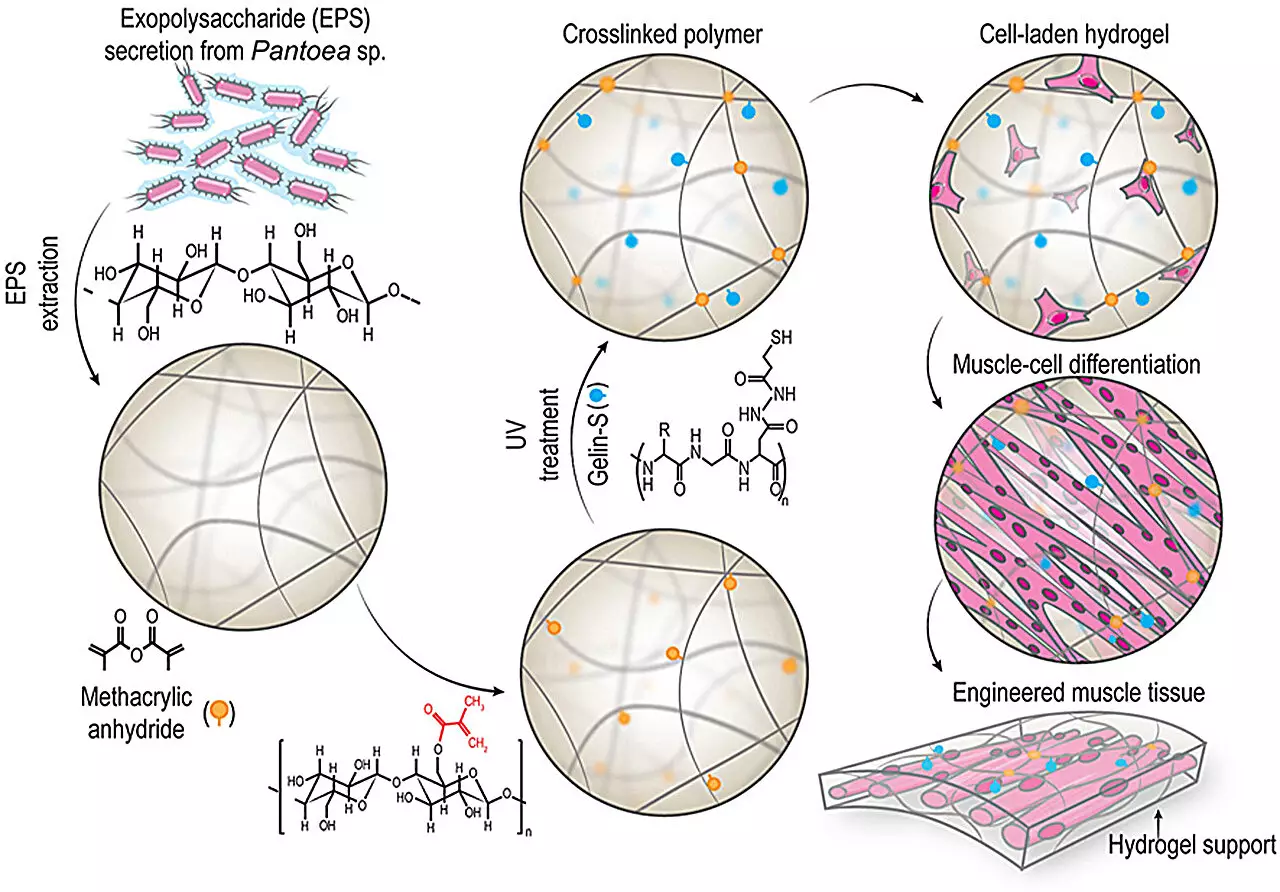In an exciting advancement in the field of regenerative medicine, researchers at the Technical University of Denmark have taken a creative approach to tissue engineering by integrating the natural capabilities of bacteria. Led by Alireza Dolatshahi-Pirouz, the team has successfully engineered a novel biopolymer that holds immense potential for muscle tissue repair and recovery. This groundbreaking study, published in the journal Bioactive Materials, highlights the development of Pantoan Methacrylate—abbreviated as PAMA—an innovative hydrogel designed to promote muscle regeneration.
Unlike traditional materials, the PAMA biopolymer is derived from bacterial biosynthetic processes, making it a pioneering example of how biotechnology can bridge the gap between living organisms and advanced medical applications. The resulting hydrogel, popularly termed “bactogel,” is not only durable but also exhibits notable elasticity and resilience, attributes that are vital for the dynamic nature of muscle tissues. Such characteristics are often lacking in existing bioactive hydrogels, which can struggle under the mechanical demands imposed by musculoskeletal functions.
In vivo studies conducted on rats underscore PAMA’s efficacy, revealing a marked enhancement in muscle tissue formation and a substantial reduction in fibrous tissue compared to controls. These findings suggest that PAMA could significantly accelerate recovery rates in subjects with muscle injuries, a prospect that presents compelling implications for a range of patient populations, including athletes and elderly individuals suffering from musculoskeletal injuries.
The implications of this research extend beyond mere laboratory results. Associate Professor Dolatshahi-Pirouz advocates that the unique properties of PAMA could transform therapeutic strategies for treating severe muscle injuries, particularly in high-risk groups such as sports professionals or military personnel. Additionally, this technology may pave the way for more effective treatment alternatives for individuals recovering from traumatic injuries, thereby enhancing both quality of life and functional mobility.
One of the most exciting aspects of this biopolymer is its potential to operate independently of cell-based therapies. The team envisions a future where PAMA can be combined with muscle progenitor cells or stem cells to amplify its healing capabilities. This could lead to innovative treatment methodologies where patient-specific regenerative solutions are crafted on demand, utilizing bacterial polymers to expedite the healing process.
A Vision for the Future of Healing
The transformative potential of bacterial-derived polymers, as expressed by Dolatshahi-Pirouz, holds significant promise. The notion of “regenerative bacto-baths,” where bacteria release essential regenerative agents tailored to individual patient needs, illustrates a visionary path towards personalized medicine. This future-oriented perspective not only challenges conventional approaches to tissue repair but also underscores the role of biotechnology in shaping medical advancements.
As research continues to unfold, the contributions of Alireza Dolatshahi-Pirouz and his team illuminate an exciting frontier in tissue engineering, propelling us into a new era where the synergy between biology and technology could lead to unprecedented healing solutions.

